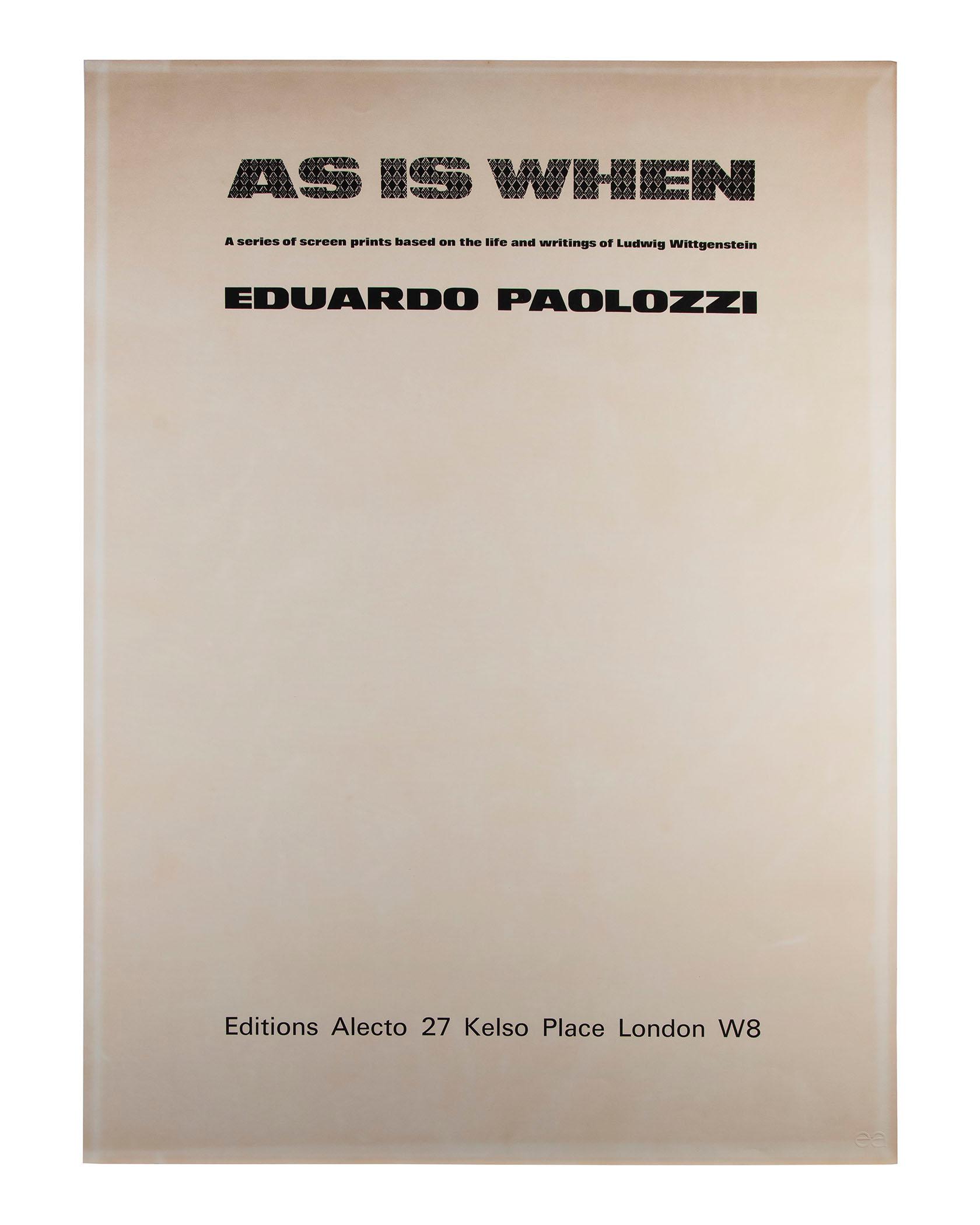As Is When: A Series of Screenprints Based on the Life and Writings of Ludwig Wittgenstein
Artist: Eduardo Luigi Paolozzi (British, 1924-2005)
Publisher: Editions Alecto, London, 1965
Printer: Kelpra Studio, London
Binder: Zaehnsdorf Limited, London
Author: Sir Eduardo Paolozzi (British, 1924-2005)
Date: 1965
Dimensions:
Slipcase: H: 39 7/8 in. (1013 mm); W: 27 3/8 in. (696 mm); Depth: 7/8 in. (23 mm).
Portfolio: H: 39 in. (990 mm); W: 27 1/16 in. (688 mm).
Sheet: H: 38 in. (965 mm); W: 26 in. (661 mm).
Medium: Original prints: 14 screenprints (incl. cover and title page).
Text: photolithography (typeface: Univers Bold).
Paper: cream wove H.P.J. Green paper.
Classification: Prints
Credit Line: Gift of Molly and Walter Bareiss
Object number: 1984.852A-P
Label Text:As Is When is based on the life and writings of Austrian philosopher Ludwig Wittgenstein (1889–1951). Of particular interest for the artist Eduardo Paolozzi was Wittgenstein’s concept of language. Wittgenstein was a pioneer of symbolic linguistic logic, structured along the lines of higher math, which eventually led to the language of computer programming. It is no coincidence that Paolozzi’s designs for As Is When often bear a strong resemblance to computer circuit boards, a technology in its infancy at the time.
Paolozzi produced twelve collages using collected diagrams, engineering patterns, and photographs that he felt reflected events in Wittgenstein’s life or ideas from his writings. The collages served as models from which stencils were produced by a combination of photography and manual separation.
This suite of screen prints has been referred to as “the first masterpiece of the medium.” The screen-printing process, combined with advances in photomechanical reproduction, lends itself to a wide range of imagery. The technique was eagerly taken up by both established and emerging artists during the early 1960s.
Paolozzi produced twelve collages using collected diagrams, engineering patterns, and photographs that he felt reflected events in Wittgenstein’s life or ideas from his writings. The collages served as models from which stencils were produced by a combination of photography and manual separation.
This suite of screen prints has been referred to as “the first masterpiece of the medium.” The screen-printing process, combined with advances in photomechanical reproduction, lends itself to a wide range of imagery. The technique was eagerly taken up by both established and emerging artists during the early 1960s.
Not on view
In Collection(s)


















